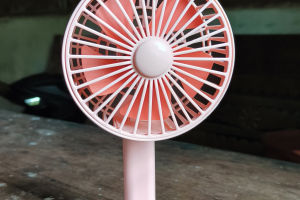A poor signal typically alludes to subpar signal quality in wireless communication, often resulting in communication issues and frustrating interruptions.
The causes of a weak signal can be numerous, encompassing environmental factors, equipment malfunctions, interference, and network congestion.
Environmental Factors
Distance: One of the primary culprits for a weakened signal is being too distant from the signal source. Wireless signals have limited reach, and straying too far from the source leads to a sharp decline in signal quality. This scenario is especially prevalent when utilizing wireless networks or mobile phones.
Obstacles: Buildings, walls, trees, and other physical impediments can obstruct the propagation of wireless signals. Signals must traverse these barriers, resulting in signal attenuation and degradation. This predicament becomes more pronounced in locations like skyscrapers or densely forested areas.
Weather Conditions: Severe weather conditions, such as thunderstorms, heavy rainfall, snowstorms, and the like, can adversely affect wireless signals. This happens due to the interaction between moisture and electromagnetic waves, which hinders signal transmission.
Electromagnetic Interference: Interference from other electronic devices, power cords, and nearby wireless signal sources can also lead to poor signal quality. Devices such as microwave ovens, cordless phones, and TV remote controls are known culprits in disrupting wireless signals.
Terrain and Geography: Terrain and geography play a significant role in signal quality. For instance, signal propagation can be limited to specific geographical settings like mountainous regions, jungles, deserts, or vast expanses of water.
Antenna Orientation: The orientation of the antenna on your wireless device can impact signal reception. Incorrect antenna alignment may result in missed or reflected signals, contributing to a poor signal.
Equipment Problems
Device Aging: Wireless devices naturally deteriorate with time, leading to diminished performance. Aging equipment may struggle to efficiently receive or transmit signals.
Equipment Failures: Equipment malfunctions are another common cause of poor signal quality. Damaged circuit boards, antenna issues, power supply failures, and similar problems can hinder a device's proper functioning.
Incompatible Devices: Compatibility issues between different devices can also disrupt signals. For instance, if your phone does not support a specific signal type or frequency band, you will experience subpar signal quality.
Signal Interference: Signal blockage between devices can occasionally cause problems, stemming from interference or band conflicts.
Identifying Poor Signal Problems
Signal Strength Observation: You can gauge signal strength by checking the signal strength indicator on your phone or computer. A very weak signal strength suggests a signal issue.
Device Health Check: Ensure your wireless device is in proper working condition, including checking the antenna and power connections.
Location Testing: Experiment with different locations by moving your device or adjusting its position to see if signal quality improves or worsens.
Interference Source Inspection: Investigate potential sources of interference in your vicinity, such as microwaves, Bluetooth devices, and TV remotes, and attempt to either switch them off or move them to a different location.
Solving the Problem of Poor Signal
Change Your Location: Try relocating closer to the signal source to enhance signal quality.
Utilize a Signal Amplifier: Signal amplifiers can bolster signal strength, making them suitable for areas plagued by weak signals.
Replace Equipment: If your equipment is aging or experiencing issues, contemplate upgrading to newer devices.
Optimize Device Settings: Ensure your device is correctly configured to maximize signal reception and transmission.
Minimize Interference: Reduce the use of potential interference sources or move them farther away from your device.
To resolve issues with poor signal quality, it is essential to pinpoint the root cause and take the appropriate measures to enhance signal quality. Ultimately, securing robust signal quality is pivotal for effective wireless communication and uninterrupted internet connectivity.


